
|
Now it is 9.0 mag (Feb. 14, Carlos Labordena). It brightens up to 8 mag in spring, and it is observable in good condition in the Northern Hemisphere. In the Southern Hemisphere, it is not observable until July.
Date(TT) R.A. (2000) Decl. Delta r Elong. m1 Best Time(A, h)
Feb. 15 2 6.37 59 13.2 1.689 1.934 88 8.9 20:26 (153,-16)
Feb. 22 2 6.01 60 5.5 1.716 1.886 83 8.8 20:16 (152,-19)
|

|
Now it is bright as 10.8 mag (Feb. 14, Carlos Labordena). It approaches to Sun down to 0.84 a.u. in March, then it brightens up to 10 mag. In the Northern Hemisphere, it stays observable for a long time, although it becomes extremely low in March. In the Southern Hemisphere, it is not observable until June when it fades down to 13 mag. It seems to be a fragment of C/1988 A1 (Liller), like C/1996 Q1 (Tabur) and C/2015 F3 (SWAN).
Date(TT) R.A. (2000) Decl. Delta r Elong. m1 Best Time(A, h)
Feb. 15 23 50.10 5 16.1 1.636 0.999 34 11.1 20:26 ( 93, -6)
Feb. 22 23 53.38 10 57.5 1.614 0.936 32 10.8 20:16 ( 95,-12)
|
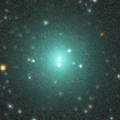
|
Now it is very bright as 10.9 mag (Jan. 31, Seiichi Yoshida). It stays 11 mag until February. In the Northern Hemisphere, it stays observable in good condition after this. It is not observable in the Southern Hemisphere.
Date(TT) R.A. (2000) Decl. Delta r Elong. m1 Best Time(A, h)
Feb. 15 19 1.11 52 5.9 0.942 1.171 74 11.1 4:01 (221,-22)
Feb. 22 19 55.73 66 15.2 0.913 1.239 81 11.2 4:10 (208,-29)
|

|
Now it is 12.4 mag (Jan. 29, Maik Meyer). It stays bright as 12-13 mag until summer. But it becomes low in spring. In the Southern Hemisphere, it will never be observable again.
Date(TT) R.A. (2000) Decl. Delta r Elong. m1 Best Time(A, h)
Feb. 15 23 45.28 44 15.1 3.590 3.260 62 12.4 20:26 (127,-27)
Feb. 22 23 50.40 45 23.8 3.666 3.280 59 12.4 20:16 (127,-29)
|

|
Brightening very rapidly. Now it is very bright as 14.0 mag (Feb. 15, Michael Jager). It moves along the same orbit as C/1844 Y1 (Great Comet). It approaches to Sun down to 0.25 a.u. on May 30. It is expected to brighten up to 3 mag. In the Northern Hemisphere, it stays observable in excellent condition until mid May when it brightens up to 6 mag. In the Southern Hemisphere, it will be unobservable soon.
Date(TT) R.A. (2000) Decl. Delta r Elong. m1 Best Time(A, h)
Feb. 15 11 37.53 49 41.9 1.409 2.238 137 13.7 2:02 (180, 6)
Feb. 22 11 24.91 53 49.5 1.314 2.130 134 13.4 1:22 (180, 1)
|

|
It brightened in outburst on Feb. 3. Now it is bright as 12.0 mag (Feb. 4, Bob King). It is already unobservable in the Southern Hemisphere. It will be unobservable in mid March also in the Northern Hemisphere.
Date(TT) R.A. (2000) Decl. Delta r Elong. m1 Best Time(A, h)
Feb. 15 0 50.28 14 14.7 6.343 5.789 52 13.7 20:26 (108, 1)
Feb. 22 0 54.85 14 37.3 6.429 5.790 46 13.8 20:16 (107, -2)
|
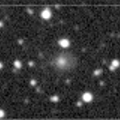
|
Now it is bright as 13.8 mag (Dec. 28, Chris Wyatt). It stays 14 mag until spring. It stays observable for a long time in the Southern Hemisphere. It is not observable until August in the Northern Hemisphere.
Date(TT) R.A. (2000) Decl. Delta r Elong. m1 Best Time(A, h)
Feb. 15 1 4.86 -64 11.7 3.875 3.506 61 14.2 20:26 ( 32, 38)
Feb. 22 1 15.43 -61 27.6 3.904 3.519 60 14.2 20:16 ( 36, 36)
|

|
In the Southern Hemisphere, it is observable at 14.5 mag from winter to spring. In the Northern Hemisphere, it is not observable until August when it fades down to 17 mag.
Date(TT) R.A. (2000) Decl. Delta r Elong. m1 Best Time(A, h)
Feb. 15 0 40.52 -67 13.3 2.299 2.013 60 14.3 20:26 ( 28, 36)
Feb. 22 1 20.94 -62 59.6 2.288 2.016 61 14.3 20:16 ( 34, 37)
|
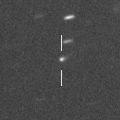
|
Now it is 16.2 mag (Feb. 2, C. Bell). It will brighten up to 13.5-14 mag from 2020 to 2021. It stays observable in good condition for a long time after this until 2020 summer.
Date(TT) R.A. (2000) Decl. Delta r Elong. m1 Best Time(A, h)
Feb. 15 13 17.30 13 29.4 2.722 3.440 129 14.9 3:41 (180, 42)
Feb. 22 13 16.57 14 4.8 2.639 3.423 136 14.8 3:13 (180, 41)
|
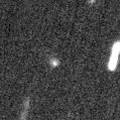
|
Now it is 15.6 mag (Jan. 4, Toshihiko Ikemura, Hirohisa Sato). It will brighten up to 10.5 mag from 2020 December to 2021 January. In the Northern Hemisphere, it stays observable in good condition while the comet will be brightening gradually, but it is not observable at the high light. In the Southern Hemisphere, it is not observable for a long time, but it will be observable in good condition after the high light.
Date(TT) R.A. (2000) Decl. Delta r Elong. m1 Best Time(A, h)
Feb. 15 18 33.27 63 36.1 3.795 3.845 85 15.2 4:01 (208,-24)
Feb. 22 18 38.03 64 45.7 3.723 3.780 85 15.1 4:10 (205,-22)
|

|
Now it is 14.1 mag (Jan. 12, Sandor Szabo). It will be fading after this, and will be fainter than 18 mag in May. In the Northern Hemisphere, it is observable in excellent condition. It locates low in the Southern Hemisphere.
Date(TT) R.A. (2000) Decl. Delta r Elong. m1 Best Time(A, h)
Feb. 15 4 18.69 15 46.3 1.114 1.612 100 15.4 20:26 (149, 33)
Feb. 22 4 35.34 14 55.5 1.181 1.628 96 15.6 20:16 (149, 34)
|

|
Now it is 14.6 mag (Dec. 28, Chris Wyatt). It will be fading slowly after this. In the Southern Hemisphere, it becomes low from February to March, but it stays observable for a long time. In the Northern Hemisphere, it is not observasble until June.
Date(TT) R.A. (2000) Decl. Delta r Elong. m1 Best Time(A, h)
Feb. 15 23 1.15 -45 43.9 4.307 3.555 35 15.6 20:26 ( 44, 15)
Feb. 22 23 8.36 -44 1.4 4.349 3.586 35 15.7 20:16 ( 44, 12)
|
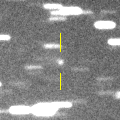
|
First return of a new periodic comet discovered in 2006. It brightened up to 14.9 mag in January (Jan. 21, R. Fichtl). It will never be observable after this.
Date(TT) R.A. (2000) Decl. Delta r Elong. m1 Best Time(A, h)
Feb. 15 23 30.65 -10 11.6 2.596 1.746 24 15.7 20:26 ( 77, -1)
Feb. 22 23 49.52 -8 50.6 2.601 1.730 22 15.6 20:16 ( 78, -1)
|

|
It brightened up to 7.7 mag in June in 2018 (June 19, Juan Jose Gonzalez). Now it is fading. It has already faded down to 15.8 mag (Jan. 31, Kunihiro Shima). In the Southern Hemisphere, it stays observable for a long time until the comet will fade out. In the Northern Hemisphere, it stays low for a while.
Date(TT) R.A. (2000) Decl. Delta r Elong. m1 Best Time(A, h)
Feb. 15 5 33.87 -25 31.8 5.624 5.980 106 15.7 20:26 (143, 78)
Feb. 22 5 32.02 -24 16.0 5.751 6.035 102 15.8 20:16 (131, 75)
|

|
Now it is very bright as 14.4 mag (Feb. 14, Taras Prystavski). Taras Prystavski reported it has a coma of 1.5 arcmin. It will approach to Sun down to 0.9 a.u. in June, and it is extected to brighten up to 10 mag. In the Southern Hemisphere, it stays observable in good condition for a long time after this. In the Northern Hemisphere, it will be unobservable from late March to late June.
Date(TT) R.A. (2000) Decl. Delta r Elong. m1 Best Time(A, h)
Feb. 15 3 56.33 -26 57.5 2.041 2.194 85 16.0 20:26 ( 98, 61)
Feb. 22 3 55.22 -26 29.7 2.034 2.106 80 15.8 20:16 ( 95, 57)
|
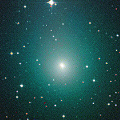
|
It brightened up to 8.3 mag in September (Sept. 20, Maik Meyer). Now it is fading. It has already faded down to 14.9 mag (Dec. 28, Chris Wyatt). In the Southern Hemisphere, it stays observable for a long time after this. In the Northern Hemisphere, it will never be observable again.
Date(TT) R.A. (2000) Decl. Delta r Elong. m1 Best Time(A, h)
Feb. 15 22 55.89 -48 45.7 3.311 2.607 38 15.8 20:26 ( 41, 16)
Feb. 22 23 5.66 -49 20.0 3.359 2.678 40 16.0 20:16 ( 40, 15)
|
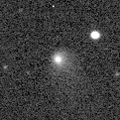
|
Now it is 14.8 mag (Dec. 28, Chris Wyatt). Fading slowly. It will be unobservable soon. It will appear in the morning sky in April in the Southern Hemisphere, or in June in the Northern Hemisphere.
Date(TT) R.A. (2000) Decl. Delta r Elong. m1 Best Time(A, h)
Feb. 15 23 32.07 -16 52.5 5.943 5.062 24 15.8 20:26 ( 72, 3)
Feb. 22 23 36.88 -15 44.4 6.018 5.099 19 15.9 20:16 ( 71, 0)
|
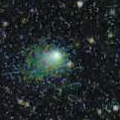
|
Now it is 15.6 mag (Jan. 7, Hidetaka Sato). Fading slowly. It is already unobservable in the Southern Hemisphre. It will be unobservable in early March also in the Northern Hemisphere.
Date(TT) R.A. (2000) Decl. Delta r Elong. m1 Best Time(A, h)
Feb. 15 0 1.42 -2 52.0 2.792 2.047 33 15.8 20:26 ( 87, 1)
Feb. 22 0 17.24 -1 31.1 2.865 2.080 30 16.0 20:16 ( 88, 0)
|

|
Now it is 15.3 mag (Jan. 5, Toshihiko Ikemura, Hirohisa Sato). It is expected to be observable at 5-6 mag for a long time from 2022 to 2023. In the Northern Hemisphere, it is not observable at the high light from 2022 summer to 2023 summer. In the Southern Hemisphere, it stays unobservable for a while. But it will be observable in good condition at the high light.
Date(TT) R.A. (2000) Decl. Delta r Elong. m1 Best Time(A, h)
Feb. 15 18 10.88 46 35.7 9.976 9.806 77 15.9 4:01 (221,-12)
Feb. 22 18 13.29 46 59.6 9.896 9.757 79 15.9 4:10 (216, -8)
|
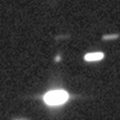
|
Now it is 16.2 mag (Feb. 5, C. Rinner, F. Kugel). It will brighten up to 13 mag in 2021. In 2020, it is observable at 15 mag in good condition from spring to summer.
Date(TT) R.A. (2000) Decl. Delta r Elong. m1 Best Time(A, h)
Feb. 15 15 2.42 -15 18.1 5.368 5.591 97 16.1 4:01 (230, 63)
Feb. 22 15 2.65 -15 48.7 5.212 5.548 104 16.0 4:10 (213, 68)
|
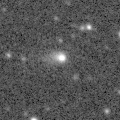
|
Now it is 14.9 mag (Jan. 20, Toshihiko Ikemura, Hirohisa Sato). It will fade out rapidly after this, and it will be fainter than 18 mag in late March. In the Southern Hemisphere, it is already unobservable.
Date(TT) R.A. (2000) Decl. Delta r Elong. m1 Best Time(A, h)
Feb. 15 23 56.02 8 58.4 2.594 1.916 38 16.2 20:26 ( 96, -7)
Feb. 22 0 11.82 10 59.8 2.656 1.939 35 16.5 20:16 ( 98, -8)
|
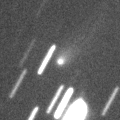
|
Now it is 16.2 mag (Jan. 21, Thomas Lehmann). The orbit is extremely hyperbolic with e=3.35. It is the first interstellar comet in history. It will be fading after this, and will be fainter than 18 mag in April. In the Southern Hemisphere, it is observable in excellent condition. In the Northern Hemisphere, it will never be observable again.
Date(TT) R.A. (2000) Decl. Delta r Elong. m1 Best Time(A, h)
Feb. 15 12 54.98 -61 8.3 2.187 2.513 97 16.2 3:19 ( 0, 64)
Feb. 22 12 57.56 -63 33.1 2.249 2.608 99 16.4 2:54 ( 0, 61)
|
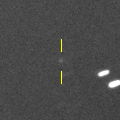
|
Now it is 17.2 mag (Feb. 2, C. Rinner, F. Kugel). It will brighten very rapidly after this. It will brighten up to 8-9 mag from summer to autumn. It will be observable in excellent condition in the Southern Hemisphere. It locates very low around the high light in the Northern Hemisphere.
Date(TT) R.A. (2000) Decl. Delta r Elong. m1 Best Time(A, h)
Feb. 15 13 40.78 -5 33.4 1.894 2.536 119 16.6 4:01 (182, 61)
Feb. 22 13 42.66 -5 36.6 1.772 2.491 126 16.3 3:39 (180, 61)
|

|
It will be fading slowly after this. In the Southern Hemisphere, it stays observable in good condition for a long time. It will never be observable after this in the Northern Hemisphere.
Date(TT) R.A. (2000) Decl. Delta r Elong. m1 Best Time(A, h)
Feb. 15 13 57.28 -72 37.2 4.825 4.850 85 16.3 4:01 (357, 52)
Feb. 22 13 38.83 -74 2.7 4.797 4.895 89 16.3 3:36 ( 0, 51)
|

|
Now it is 16.3 mag (Jan. 19, Toshihiko Ikemura, Hirohisa Sato). It will be fading gradually after this. It will be fainter than 18 mag in April.
Date(TT) R.A. (2000) Decl. Delta r Elong. m1 Best Time(A, h)
Feb. 15 9 4.56 7 41.0 2.118 3.090 167 16.3 23:24 (180, 47)
Feb. 22 8 59.60 8 15.0 2.172 3.122 160 16.5 22:52 (180, 47)
|
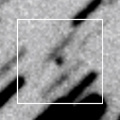
|
Now it is 16.5 mag (Dec. 27, Toshihiko Ikemura, Hirohisa Sato). It stays observable at 17 mag from 2020 to 2021. It locates somewhat low in the Northern Hemisphere.
Date(TT) R.A. (2000) Decl. Delta r Elong. m1 Best Time(A, h)
Feb. 15 10 54.96 -25 9.1 5.829 6.603 138 16.5 1:19 (180, 80)
Feb. 22 10 53.07 -24 54.1 5.778 6.600 143 16.5 0:49 (180, 80)
|
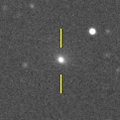
|
Now it is 15.5 mag (Jan. 20, Toshihiko Ikemura, Hirohisa Sato). It will be fading slowly after this.
Date(TT) R.A. (2000) Decl. Delta r Elong. m1 Best Time(A, h)
Feb. 15 1 36.78 5 37.1 2.713 2.363 59 16.6 20:26 (109, 15)
Feb. 22 1 49.05 6 57.9 2.789 2.371 55 16.7 20:16 (109, 13)
|
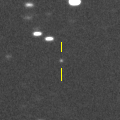
|
Now it is 17.2 mag (Feb. 2, D. Buczynski). It will brighten up to 16 mag in March, and it will be observable in good condition.
Date(TT) R.A. (2000) Decl. Delta r Elong. m1 Best Time(A, h)
Feb. 15 11 36.76 43 13.0 0.894 1.780 142 16.8 2:01 (180, 12)
Feb. 22 11 22.80 42 2.9 0.850 1.757 145 16.7 1:20 (180, 13)
|

|
It looks cometary on the LCO (CTIO) image on Aug. 21. Now it is 16.2 mag (Oct. 2, ATLAS-MLO, Mauna Loa). It is appearing in the mornign sky in the Southern Hemisphere. It will be observable in late March also in the Northern Hemisphere.
Date(TT) R.A. (2000) Decl. Delta r Elong. m1 Best Time(A, h)
Feb. 15 20 6.66 -31 26.4 7.339 6.505 30 16.7 4:01 (300, 12)
Feb. 22 20 8.23 -31 9.6 7.282 6.513 36 16.7 4:10 (296, 18)
|
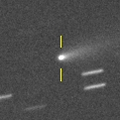
|
Now it is 15.6 mag (Jan. 22, Thomas Lehmann). It will fade out rapidly after this, and it will be fainter than 18 mag in March.
Date(TT) R.A. (2000) Decl. Delta r Elong. m1 Best Time(A, h)
Feb. 15 11 27.91 14 36.8 1.112 2.055 156 16.7 1:52 (180, 41)
Feb. 22 11 24.67 15 19.9 1.125 2.091 163 17.1 1:21 (180, 40)
|

|
Now it is 17.7 mag (Feb. 2, D. Buczynski). It stays 16-17 mag for a long time until 2020. It is observable in good condition in the Northern Hemisphere. In the Southern Hemisphere, it is observable in the extremely low sky only in 2021 spring.
Date(TT) R.A. (2000) Decl. Delta r Elong. m1 Best Time(A, h)
Feb. 15 13 27.94 55 5.1 8.153 8.699 120 16.8 3:51 (180, 0)
Feb. 22 13 25.70 55 25.2 8.142 8.709 122 16.8 3:22 (180, 0)
|
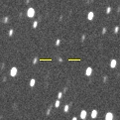
|
Now it is 16.7 mag (Dec. 3, D. Buczynski). It will stay at 14 mag for a long time from 2021 to 2022. In the Northern Hemisphere, it stays observable in good condition while brightening gradually. In the Southern Hemisphere, it is not observable until March.
Date(TT) R.A. (2000) Decl. Delta r Elong. m1 Best Time(A, h)
Feb. 15 19 7.91 29 46.5 7.313 6.842 58 16.8 4:01 (241,-11)
Feb. 22 19 10.23 29 56.5 7.238 6.809 60 16.8 4:10 (237, -5)
|

|
Now it is 16.8 mag (Feb. 2, Catalina Sky Survey). It will brighten up to 16.5 mag and will be observable in good condition in March.
Date(TT) R.A. (2000) Decl. Delta r Elong. m1 Best Time(A, h)
Feb. 15 13 29.04 -1 26.5 1.412 2.128 124 17.0 3:52 (180, 57)
Feb. 22 13 31.91 -1 25.9 1.353 2.131 130 16.9 3:28 (180, 57)
|

|
Fading. Now it is 17.2 mag (Dec. 28, Hidetaka Sato). It is observable at 17 mag in good condition in spring. But it will be fainter than 18 mag in June.
Date(TT) R.A. (2000) Decl. Delta r Elong. m1 Best Time(A, h)
Feb. 15 17 22.52 -7 7.5 3.032 2.784 66 17.1 4:01 (255, 32)
Feb. 22 17 31.63 -6 33.8 2.993 2.826 70 17.1 4:10 (250, 37)
|

|
Now it is 16.8 mag (Jan. 21, Toshihiko Ikemura, Hirohisa Sato). It brightens up to 17 mag until March. It is not observable in the Southern Hemisphere.
Date(TT) R.A. (2000) Decl. Delta r Elong. m1 Best Time(A, h)
Feb. 15 1 5.14 16 24.5 1.741 1.449 56 17.2 20:26 (112, 2)
Feb. 22 1 23.67 19 39.4 1.780 1.455 54 17.2 20:16 (115, 1)
|

|
Fading. Now it is 17.6 mag (Feb. 1, Catalina Sky Survey). It stays observable in good condition for a while. But it will be fainter than 18 mag in April.
Date(TT) R.A. (2000) Decl. Delta r Elong. m1 Best Time(A, h)
Feb. 15 8 5.02 23 44.2 6.166 7.058 152 17.3 22:25 (180, 31)
Feb. 22 7 59.58 23 36.7 6.273 7.102 144 17.4 21:52 (180, 31)
|
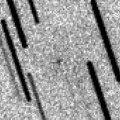
|
It approached to Earth down to 0.09 a.u. in early January, and it brightened up to 16.7 mag (Jan. 21, Toshihiko Ikemura, Hirohisa Sato). Now it is fading. Now it is 17.5 mag (Jan. 31, Ken-ichi Kadota). It is obesrvable in excellent condition in the Northern Hemisphere. It became observable also in the Southern Hemisphere.
Date(TT) R.A. (2000) Decl. Delta r Elong. m1 Best Time(A, h)
Feb. 15 9 26.16 42 19.4 0.281 1.239 150 17.3 23:47 (180, 13)
Feb. 22 9 33.28 38 17.0 0.343 1.299 150 17.8 23:27 (180, 17)
|
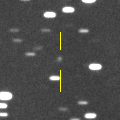
|
Now it is 17.4 mag (Dec. 28, Toshihiko Ikemura, Hirohisa Sato). It stays observable at 16.5 mag for a long time from 2020 to 2021. In the Northern Hemisphere, it is observable in excellent condition for a long time. In the Southern Hemisphere, it is not observable until 2021 summer.
Date(TT) R.A. (2000) Decl. Delta r Elong. m1 Best Time(A, h)
Feb. 15 0 57.58 71 46.4 6.438 6.518 90 17.5 20:26 (160,-29)
Feb. 22 1 0.33 70 47.7 6.495 6.498 85 17.5 20:16 (158,-30)
|

|
Now it is 19.0 mag (Jan. 28, Mt. Lemmon Survey). It will brighten up to 17 mag and will be observable in excellent condition from March to May.
Date(TT) R.A. (2000) Decl. Delta r Elong. m1 Best Time(A, h)
Feb. 15 12 57.77 -6 39.0 1.423 2.189 129 17.7 3:21 (180, 62)
Feb. 22 12 59.79 -6 41.2 1.351 2.175 136 17.5 2:56 (180, 62)
|

|
Now it is 17.2 mag (Nov. 25, ATLAS-MLO). It brightened up to 14 mag from autumn to winter in 2018. Now it is fading. It is observable at 17.5 mag in good condition from winter to spring.
Date(TT) R.A. (2000) Decl. Delta r Elong. m1 Best Time(A, h)
Feb. 15 13 45.97 -3 9.9 3.850 4.421 119 17.6 4:01 (184, 58)
Feb. 22 13 43.34 -3 15.4 3.794 4.461 127 17.6 3:39 (180, 58)
|

|
Now it is 18.0 mag (Jan. 29, ATLAS-MLO, Mauna Loa). It will brighten up to 13 mag in 2022. In 2020, it is observable at 17.5 mag in good condition in spring. It locates somewhat low in the Southern Hemisphere.
Date(TT) R.A. (2000) Decl. Delta r Elong. m1 Best Time(A, h)
Feb. 15 10 39.86 20 22.1 3.599 4.564 166 17.6 1:04 (180, 35)
Feb. 22 10 35.52 20 49.0 3.577 4.552 168 17.6 0:32 (180, 34)
|
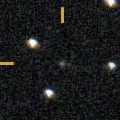
|
Now it is 17.7 mag (Jan. 24, ATLAS-MLO, Mauna Loa). It is observable at 17-18 mag for a long time from late 2019 to early 2021. It will fade out before it passes the perihelion.
Date(TT) R.A. (2000) Decl. Delta r Elong. m1 Best Time(A, h)
Feb. 15 2 58.26 4 44.6 5.105 5.000 78 17.7 20:26 (123, 31)
Feb. 22 3 1.33 5 21.0 5.198 4.986 72 17.7 20:16 (120, 28)
|
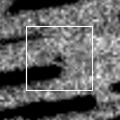
|
It is observable at 17.5 mag in good condition until spring.
Date(TT) R.A. (2000) Decl. Delta r Elong. m1 Best Time(A, h)
Feb. 15 17 11.37 -17 42.1 2.414 2.226 67 17.7 4:01 (264, 40)
Feb. 22 17 23.01 -17 48.9 2.361 2.252 71 17.8 4:10 (260, 45)
|

|
It will be observable at 16.5-17 mag from spring in 2020 to summer in 2021.
Date(TT) R.A. (2000) Decl. Delta r Elong. m1 Best Time(A, h)
Feb. 15 19 56.91 19 38.1 5.758 5.082 43 17.8 4:01 (256,-15)
Feb. 22 19 58.92 19 44.1 5.700 5.060 45 17.7 4:10 (252, -8)
|

|
Now it is 17.5 mag (Feb. 3, ATLAS-HKO, Haleakala). It will be fainter than 18 mag in late April.
Date(TT) R.A. (2000) Decl. Delta r Elong. m1 Best Time(A, h)
Feb. 15 12 44.56 8 32.2 9.989 10.735 137 17.8 3:08 (180, 47)
Feb. 22 12 43.79 8 51.1 9.935 10.752 144 17.8 2:40 (180, 46)
|

|
It will brighten up to 15.5 mag and will be observable in good condition from June to September.
Date(TT) R.A. (2000) Decl. Delta r Elong. m1 Best Time(A, h)
Feb. 15 18 14.32 -10 26.7 3.109 2.636 52 18.0 4:01 (267, 23)
Feb. 22 18 26.17 -9 42.8 3.012 2.608 56 17.9 4:10 (262, 28)
|
|
![]()
 C/2018 W2 ( Africano )
C/2018 W2 ( Africano ) C/2017 B3 ( LINEAR )
C/2017 B3 ( LINEAR ) 68P/Klemola
68P/Klemola C/2017 K2 ( PanSTARRS )
C/2017 K2 ( PanSTARRS ) C/2019 F1 ( ATLAS-Africano )
C/2019 F1 ( ATLAS-Africano ) 160P/LINEAR
160P/LINEAR 2I/2019 Q4 ( Borisov )
2I/2019 Q4 ( Borisov ) 88P/Howell
88P/Howell C/2017 M4 ( ATLAS )
C/2017 M4 ( ATLAS ) 78P/Gehrels 2
78P/Gehrels 2 C/2019 C1 ( ATLAS )
C/2019 C1 ( ATLAS ) 101P/Chernykh
101P/Chernykh 124P/Mrkos
124P/Mrkos A/2017 U7
A/2017 U7 155P/Shoemaker 3
155P/Shoemaker 3 C/2010 U3 ( Boattini )
C/2010 U3 ( Boattini ) C/2018 U1 ( Lemmon )
C/2018 U1 ( Lemmon ) P/2019 Y2 ( Fuls )
P/2019 Y2 ( Fuls ) C/2019 F2 ( ATLAS )
C/2019 F2 ( ATLAS ) 112P/Urata-Niijima
112P/Urata-Niijima C/2015 O1 ( PanSTARRS )
C/2015 O1 ( PanSTARRS ) 289P/Blanpain
289P/Blanpain C/2019 T3 ( ATLAS )
C/2019 T3 ( ATLAS ) 87P/Bus
87P/Bus (944) Hidalgo
(944) Hidalgo 117P/Helin-Roman-Alu 1
117P/Helin-Roman-Alu 1 173P/Mueller 5
173P/Mueller 5 175P/Hergenrother
175P/Hergenrother C/2017 Y2 ( PanSTARRS )
C/2017 Y2 ( PanSTARRS ) C/2014 B1 ( Schwartz )
C/2014 B1 ( Schwartz ) 257P/Catalina
257P/Catalina![]()






































